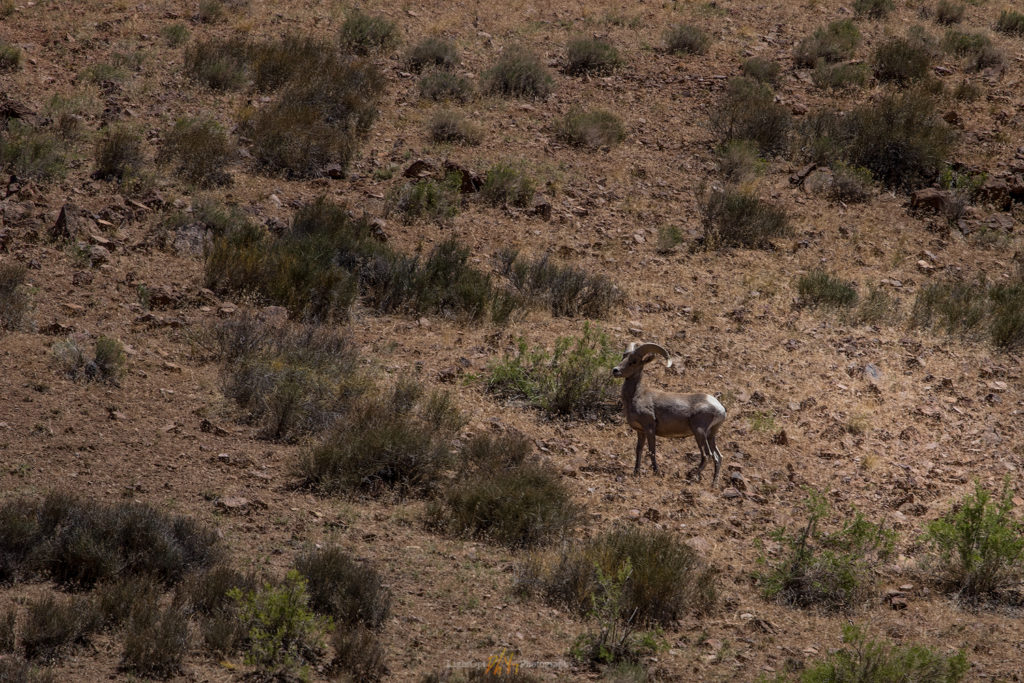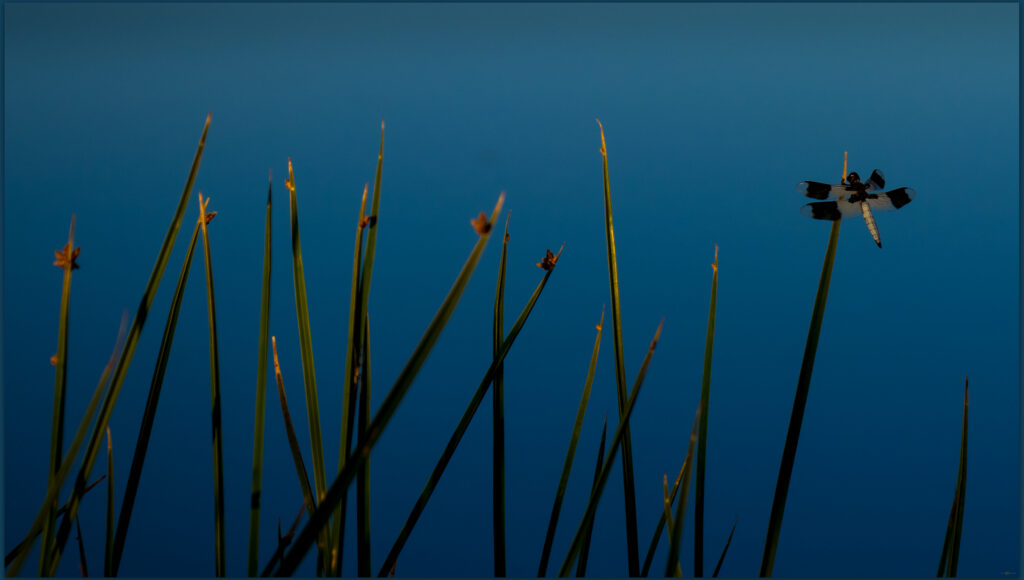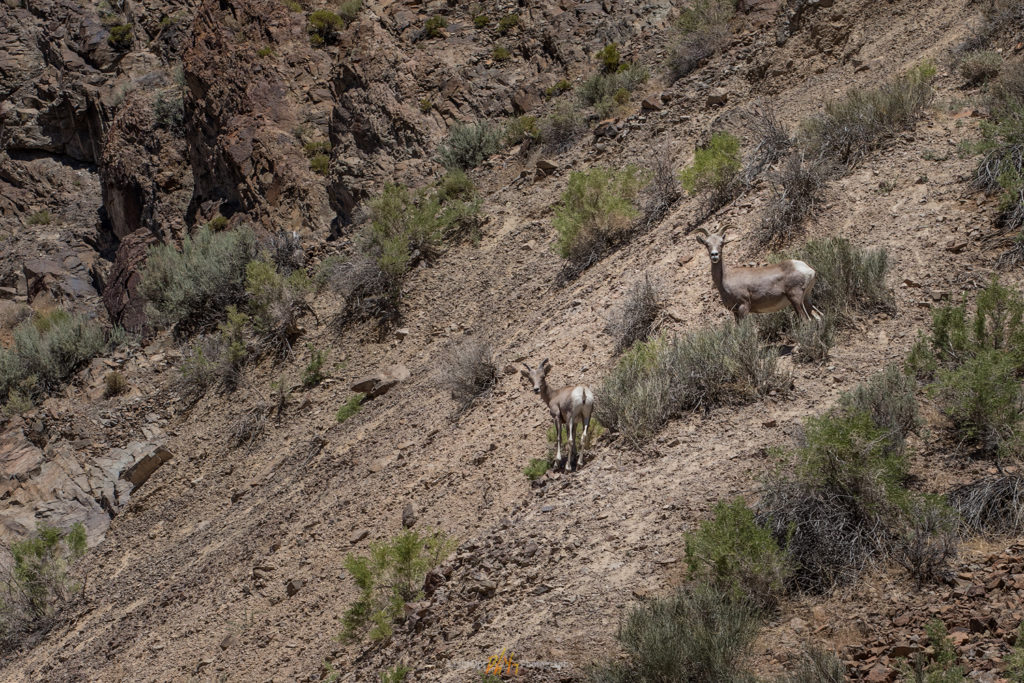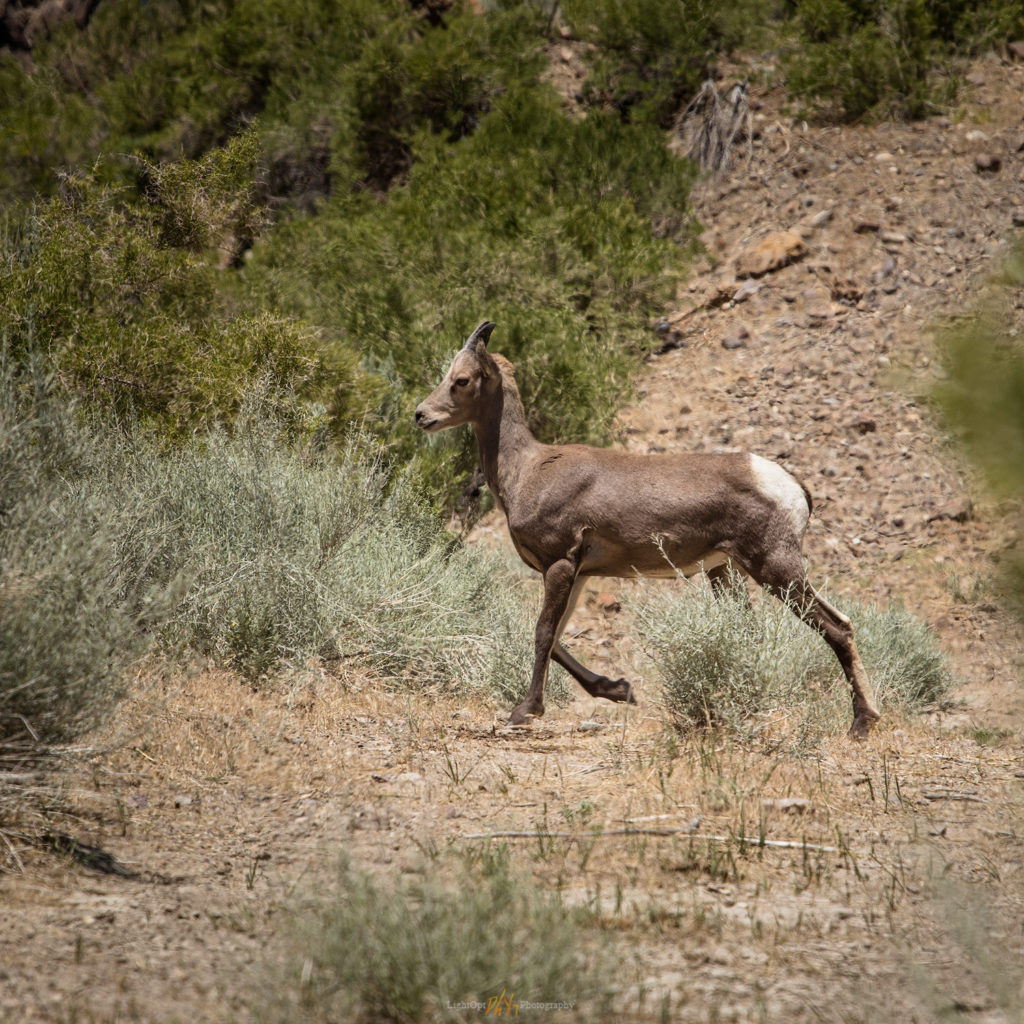I left StoneHeart about 9AM, a little later than I hoped to. Packed and ready for another opportunity to work on the Old River Bed Delta in the Bonneville Basin, Utah. Leaving Carson City, I worked my way eastward on Highway 50, fueling at the usual spots–basically the only spots. Traversing the heart of Nevada, Highway 50 has the moniker of The Loneliest Road in America. I will tell you straight up, it is no longer that, and I certainly know lonelier roads, but it remains one of my favorite drives. I choose it over Interstate 80, to the north, every time.
And yet, the lonely is still here if one seeks it. The old highway over Carroll Summit, now Highway 722, toward Austin has the feel of the Loneliest Road. So 722 it is; longer in distance and time, but it is almost always my choice. At Buffalo Canyon, just beyond Eastgate on the slopes above one of my favorite arroyos in the Great Basin, four Desert bighorn sheep (Ovis canadensis nelsoni), ewes and juveniles, cross the highway and climb away from the flowing stream. I pull off around the next bend in the pavement and grabbed my 80D and the 70-200mm. I keep the 80D and telephoto ready in the cab for sightings such as this. The camera’s APS-C sensor has a crop-factor of 1.6, so I gain some telephoto reach over my full-frame camera body—I think the 80D and 70-200mm lens is a wonderful combination for these situations. Leaving the truck, I slowly but deliberately walk down the road. The sheep are skittish, but they only walk further uphill; a ewe and a yearling lamb hang back. The temperature is climbing quickly, and it seems they really want to get to the water in Buffalo Creek. I do not want to impede them, so I walk back to the base of a road cut and colluvial apron nearer my truck, noticing many tracks and trails along with another group of sheep just above me. I shoot few images but feel shaky trying to get a good shot with the long lens. Looking back at my images, I forgot to increase my ISO so that I could go with a faster shutter to minimize camera movement.
Bighorn and Dragons Collection
As I return to my truck, I notice the lower pair following me. I drop to an old two-track road along the creek, take a seated position behind a greasewood, and wait. Now I really notice how hot it is. And wait. The pair eventually appear at the edge of the pavement above me, cautiously peering over the edge toward the stream. They must know I am here somewhere, but they have lost track of me as I hoped. Finally, the youngster, a ram to-be, trots across the dirt in front of me and I get a nice image. But my camera movement alerts the ewe to my location and she bolts toward the creek. I miss that shot.
Nice to have been patient and get a small reward with the image of the juvenile ram. I quietly return to the truck and let them be. I decide to keep the camera ready. And good fortune because a good-sized ram crosses in front of me. Because this route is not travelled heavily, I can simply stop in the road and shoot few images of the ram on the hillside. He walks slowly upward and I get a couple good exposures, though the hand-held sharpness is probably lacking. (Definitely lacking, again, needed higher ISO to get to faster shutter speed.)

I spent the remainder of the day traversing the state—Austin, Eureka, to Ely. Turned north at Ely to head to Wendover, our lodging for the project on the Old River Bed Delta. But there is no need to get to Wendover too soon. On Alt 93 just beyond White Horse Pass, I turn east on Ibapa Road and cross into Utah. I stopped in a small playette to check out the arch or window in Elephant Rock. I took a few hand-held photos of Elephant Rock and a low set of hills to the southeast, before moving into the big arroyo below Deep Creek Reservoir. It looks like a historic-era irrigation canal pirated Deep Creek to cut a deep arroyo in lacustrine sediment of the once expansive, pluvial Lake Bonneville. The light and sky are fine for documentary images, but I’m not feeling inspired. Noting the Elephant Rock and its arch have some potential, especially for astrophotography, I drop into the drainage and enjoy a walk along the silt walls of the arroyo.
I eventually pound my way through deep dust along Blue Lake Road, at the western margin of the West Desert, arriving at Blue Lakes at sunset. As I climb out of the truck the mosquitos (Culicidae) welcome me with biting fervor. It is warm but I quickly dig out my rain jacket for protection. The ponds and its surrounding vegetation look nicely vivid against the playa. The sky is not cooperating, but the scene is still good. The mosquitos are livid that I have covered up, so they redouble their efforts on my face and hands. I get an overview I like and look for some closer images nearer the spring pool.

I learned a good lesson here at Blue Lakes. While I like the image of the spring, its moist green against the expansive desert, the Evening Dragon composition may be my best image this year (this means it could be my best image ever, given I began a somewhat serious photographic approach only recently). The big light was not inspiring me, but by focusing in on smaller scenes, I found a gem. These predatory dragons need to get to hunting; I can’t stand out here any longer. Darkness setting in and it is time to head into Wendover.
Bighorn and Dragons Collection
Keep going.


